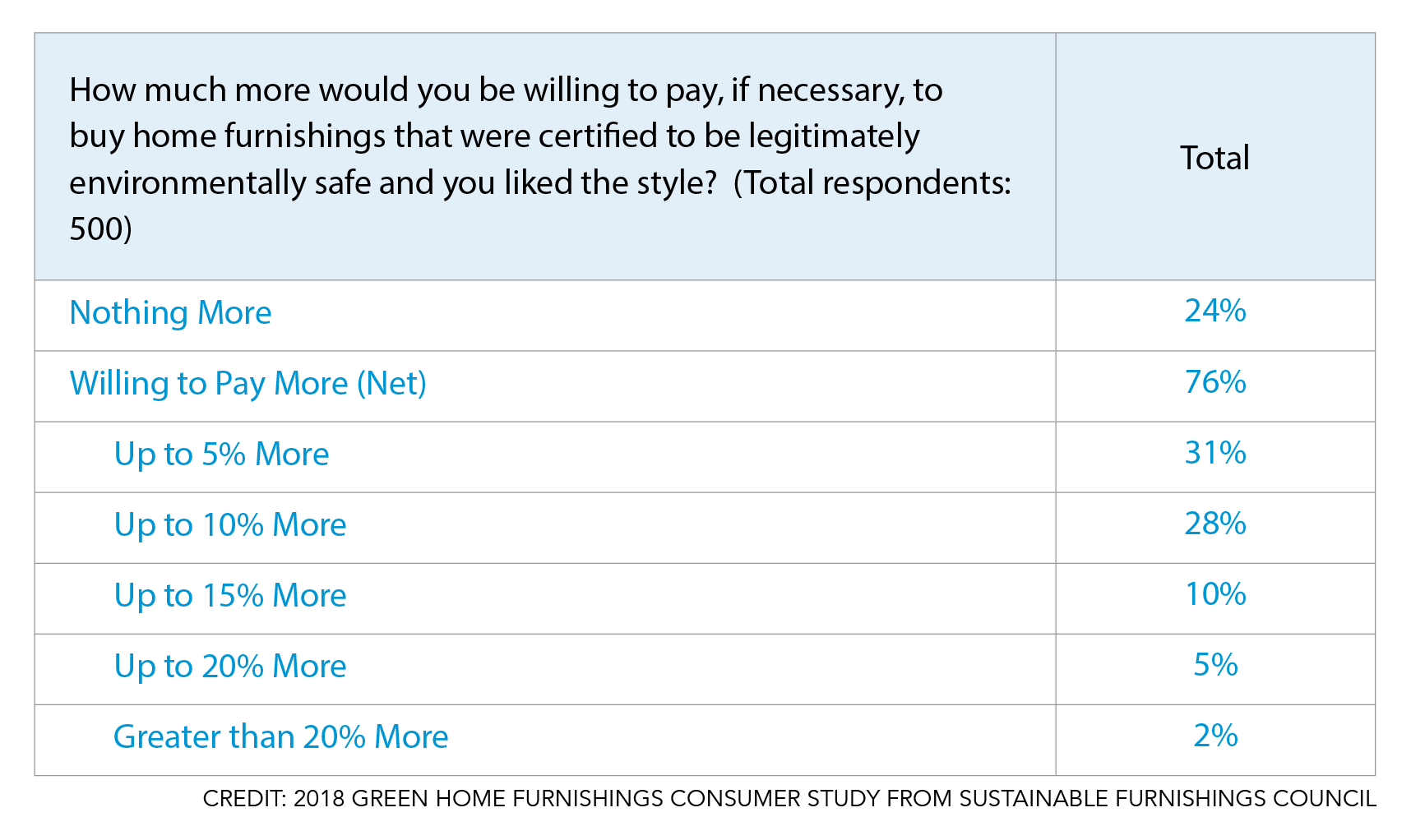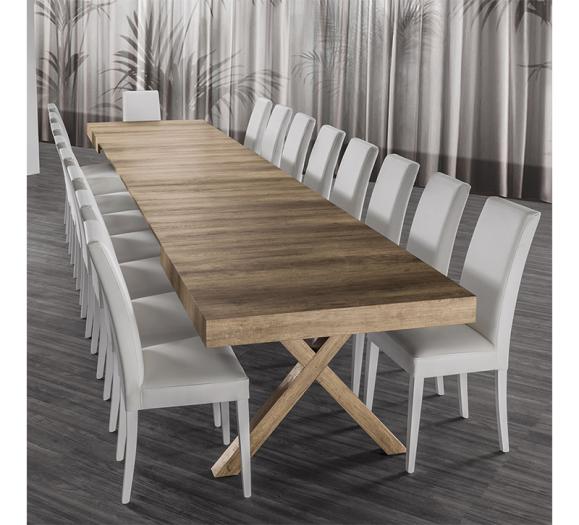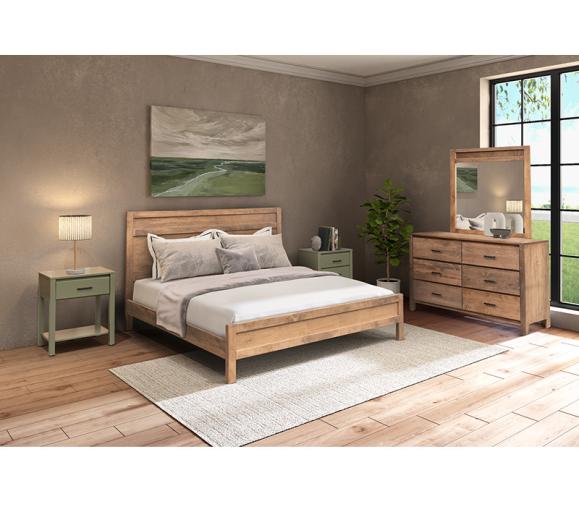As the impacts of climate change become increasingly apparent and public discourse about the environment continues to grow, consumers are holding businesses accountable for their sustainability initiatives — and they’re putting their money where their mouth is. Nielsen’s most recent Global Sustainability Report found that 66 percent of consumers said they were willing to pay more for sustainable brands, up from 55 percent in 2014.
But how does that translate to the home furnishings industry, and what do consumers really care about when it comes to sustainable furniture? The Sustainable Furnishings Council’s (SFC) 2018 Green Home Furnishings Consumer Study has some answers. The survey targeted homeowners between the ages of 30 and 60 with household incomes of $50,000 or more who have spent more than $500 on home furnishings in the past 12 months. Here we break down SFC’s findings on just how concerned these consumers are and how this impacts their habits and buying behavior.
Levels of Concern
On the whole, these consumers are considerably worried about the environment: 98 percent expressed concern about environmental issues, and 8 in 10 said they have experienced heightened levels of concern in the wake of recent natural disasters. Ninety percent vote for political candidates who promise eco-friendly legislation. And consumer concern isn’t just for the planet, but also for their own health: 83 percent of respondents expressed concern about hazardous indoor air quality.
Sustainable Habits
Ninety-nine percent of respondents said they practice environmentally friendly habits. Some more takeaways on consumer habits:
•More than 8 in 10 recycle and replace lightbulbs with energy-efficient options.
•67 percent have made food- and drink-related changes like reducing bottled water consumption.
•71 percent use reusable shopping bags.
As consumers adjust to practicing more environmentally friendly habits, they may expect the businesses they buy from to do the same.
Purchasing Behavior

Consumers clearly care about the environment, but how does that translate to their buying decisions and attitudes about home furnishings in particular? Here are some key stats:
•89 percent have purchased environmentally safe products. For those who have not, a lack of awareness (39 percent) and cost (28 percent) were the biggest obstacles.
•92 percent of respondents expressed interest in purchasing environmentally safe home furnishings if style and cost considerations were comparable.
•Nearly 60 percent of respondents are willing to pay 5 to 10 percent more for home furnishings certified to be environmentally safe.
•92 percent expressed interest in buying wood furniture certified as legal and coming from responsibly managed forests.
•When it comes to textiles for the home, 95 percent expressed interest in purchasing textiles labeled with a third-party certificate as “safe,” and 97 percent want to see certification for “quality materials.” Eighty-seven percent want certification that textiles are produced at a verified environmentally friendly, safe and socially responsible facility.
•69 percent would work with an environmental safety-conscious interior designer if style and cost were comparable.
•90 percent think the chemicals and materials used when manufacturing furniture are important or very important to their purchase decision process.
While consumers ultimately care about the environment and want to make more sustainable purchases, they aren’t always willing to compromise when it comes to other product attributes. When ranking home furnishings product qualities in order of importance, respondents ranked comfort, style and price/value as their top three considerations. Just 12 percent of respondents ranked “earth-friendly” as one of their top three choices.
Regardless, for companies that want to give consumers another reason to choose their business over Amazon, Wayfair or a big-box retailer, prioritizing sustainable initiatives and offering green products can go a long way.







